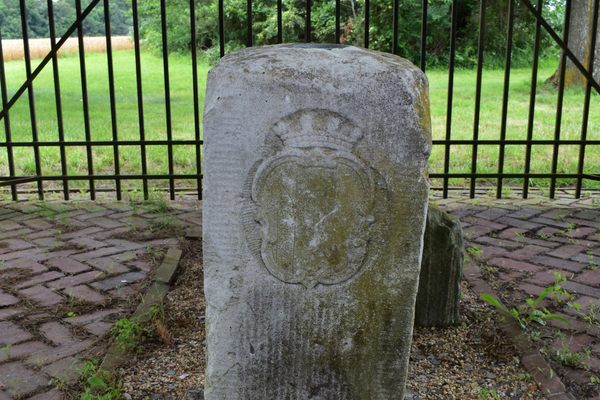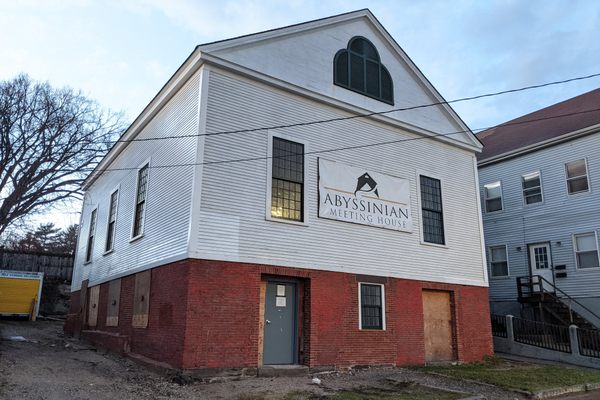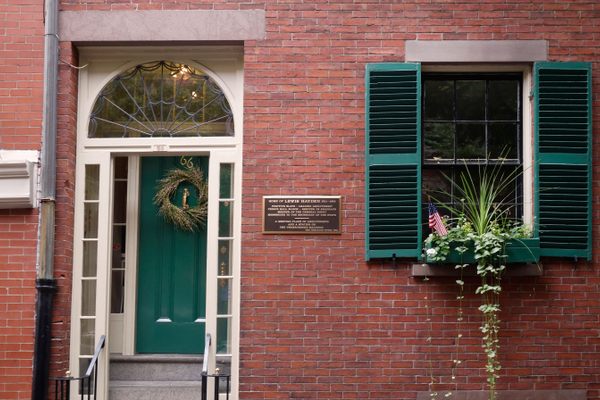AO Edited
Site of the Tilly Escape
In October 1856, Harriet Tubman escaped arrest at this site while attempting to reunite an enslaved woman named Tilly with her fiancé.
Harriet Tubman, the “Moses of her people,” usually conducted her work on the Underground Railroad by night, using the North Star as a guide. However, in October 1856, she took on what was possibly her most daring escape—a rescue of an enslaved woman named Tilly, undertaken in broad daylight. Using her ingenuity, she and Tilly evaded arrest at an inn in Seaford, Delaware. Today, the location is a small municipal plaza, and a historical plaque at the site recognizes this unearthed story.
Harriet Tubman had led many passages through Delaware on the Underground Railroad, by 1856, including during her own emancipation. Born in the Chesapeake Bay near Cambridge, Maryland, Tubman knew the area well, and developed connections there. At the time, Delaware was a slave state that also contained a large Quaker presence, including famed “station master” Thomas Garrett, and its proximity to freedom in nearby Philadelphia kept the state a roiling powder keg.
Tubman was hired by a man who had to leave his fiancé behind in order to escape to freedom in Canada. Seven years later, he would pay Tubman to rescue her. The woman, likely named “Laura,” was enslaved in Baltimore. To reach her, Tubman traveled by steamship from Philadelphia, asking the steamboat captain for a letter of passage confirming her status as a free Black woman.
After freeing the enslaved woman, giving her the new name “Tilly” to avoid undue attention, together they began the journey back to Philadelphia. However, the direct approach was out of the question, as she would have to pay a $500 bond. Instead, she sailed down the Chesapeake on a second steamboat to Nanticoke River and Seaford. She managed to bluff or convince the second captain to write a letter of passage for Tilly, who recognized the first captain’s signature.
The incident all came to a head on or about October 24, 1856, when Tilly and Tubman arrived at a Seaford inn likely known as the Coulbourn House. Tubman asked for room and board, paying for a night’s stay. The next morning, the landlord, likely a man named John Coulbourn, was approached by a slave trader. Spotting the pair of travelers, the slave trader attempted to make an arrest, but the landlord intervened, presenting Tilly’s ostensibly fraudulent letter of passage. With the crisis averted, the women would continue by foot to Bridgeville and then catch the train to Camden, eventually reconnecting with Garrett in Wilmington.
Although Tubman was celebrated in her lifetime, many of the details of her rescues were difficult to reconstruct, as the Underground Railroad was intentionally kept secret, and many of the travelers, including Tubman, were not literate. Seaford’s connection to the details of the Tilly escape remained unconfirmed for over a century, when thanks to Jim Blackwell, historian, and curator of the Seaford Historical Museum, they were unearthed in advance of an exhibit on Seaford’s otherwise difficult history of slavery.
Using research from Tubman scholars interpreting the Tilly story, and a contemporaneous letter from Thomas Garrett, Blackwell was able to reconstruct the route Tubman took from timetables and the newly formed train line. The site of the inn itself had changed hands many times, going from a grand hotel to a dilapidated gas station to an eyesore by the 1990s.
Putting funds together, the town opened a small public plaza with a fountain in 1996, calling it Gateway Park. However, as Blackwell noted in his proposal that earned the location a spot on the National Parks Service National Underground Railroad Network to Freedom, although the town named the park as a reference of a gateway to Seaford, they didn’t yet realize that for one fated point in its history, the park was also a “Gateway to Freedom.”
Know Before You Go
A state historical marker recounting Tilly’s story was placed at the site in 2014. It is free and open to the public. Visitors seeking more information about the Tilly Escape can visit an exhibit at the nearby Seaford Historical Museum, or watch a documentary video produced and narrated by Jim Blackwell.














Follow us on Twitter to get the latest on the world's hidden wonders.
Like us on Facebook to get the latest on the world's hidden wonders.
Follow us on Twitter Like us on Facebook